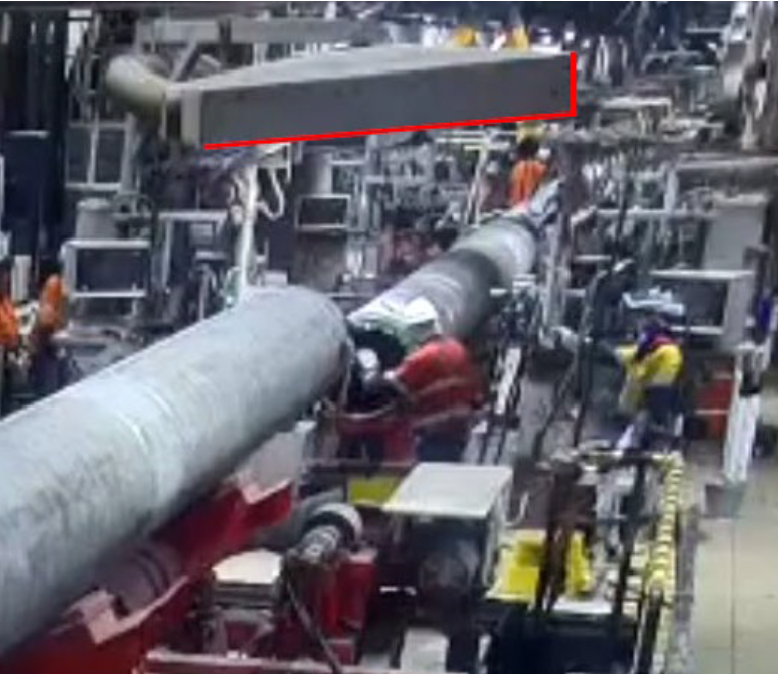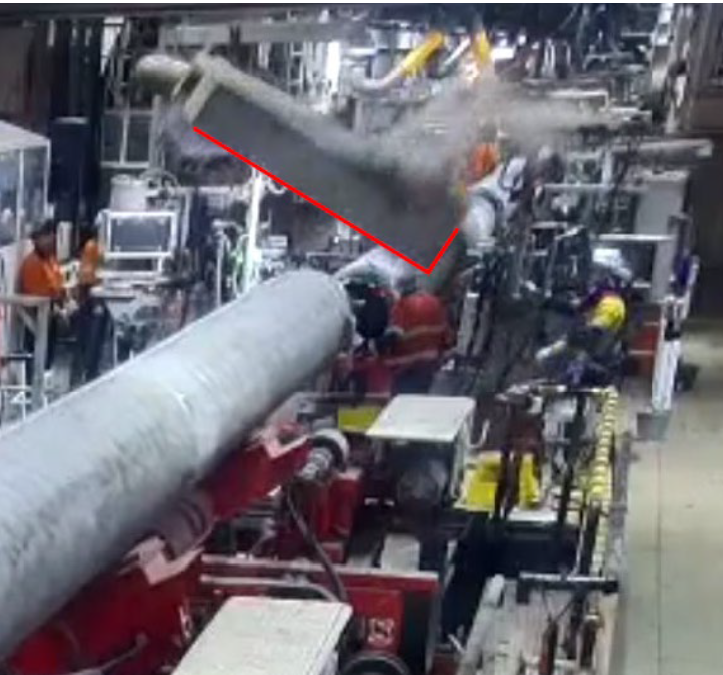Dropped welding fume extraction hood
What happened
During pipelay activities onboard a vessel, a welding fume extraction hood (which weighed 215kg) fell onto a work station below. A crew member working in the welding station was struck from behind by the extraction hood causing them to fall to the ground. If the person had been struck in a different manner by the extraction hood, this could have resulted in a fatal injury.


What went wrong
- The fume extraction hood was an in-house modification, and the drawings were not in accordance with existing company procedures;
- The intended design consisted of the following:
- Primary Securing Method: A plate connecting the hood to the beam. The plate is secured to the hood via 6x M10 bolts and the plate secured to the beam by welding.
- Secondary Securing Method: One M20 bolt running through the beam and the hood.
- The hood was not installed as per the drawings (due to the design being misunderstood), which meant that it was secured ONLY by the secondary securing method – a single M20 bolt running through the beam and the hood;
- A dynamic load was placed upon the single fixing point which allowed the hood to rotate and flex, causing increased stress on the bolt, triggering this to crack and shear, resulting in the hood dropping;
- The hood had not been added to the vessel DROPS register and so had not been included in the annual DROPS surveys, nor inspected, since installation.
Actions and lessons
- Ensure that in-house modifications are always conducted in accordance with local regulatory requirements, existing company procedures, and that a Management of Change process is followed if modifications are made;
- Have a through inspection of the vessel or worksite looking for potential dropped objects and plan to remove them where applicable;
- Look particularly for any unidentified modifications and ensure DROPS registers are updated as required.
Members may wish to refer to:
Safety Event
Published: 18 June 2024
Download: IMCA SF 12/24
IMCA Safety Flashes
Submit a Report
IMCA Safety Flashes summarise key safety matters and incidents, allowing lessons to be more easily learnt for the benefit of all. The effectiveness of the IMCA Safety Flash system depends on Members sharing information and so avoiding repeat incidents. Please consider adding [email protected] to your internal distribution list for safety alerts or manually submitting information on incidents you consider may be relevant. All information is anonymised or sanitised, as appropriate.
IMCA’s store terms and conditions (https://www.imca-int.com/legal-notices/terms/) apply to all downloads from IMCA’s website, including this document.
IMCA makes every effort to ensure the accuracy and reliability of the data contained in the documents it publishes, but IMCA shall not be liable for any guidance and/or recommendation and/or statement herein contained. The information contained in this document does not fulfil or replace any individual’s or Member's legal, regulatory or other duties or obligations in respect of their operations. Individuals and Members remain solely responsible for the safe, lawful and proper conduct of their operations.
